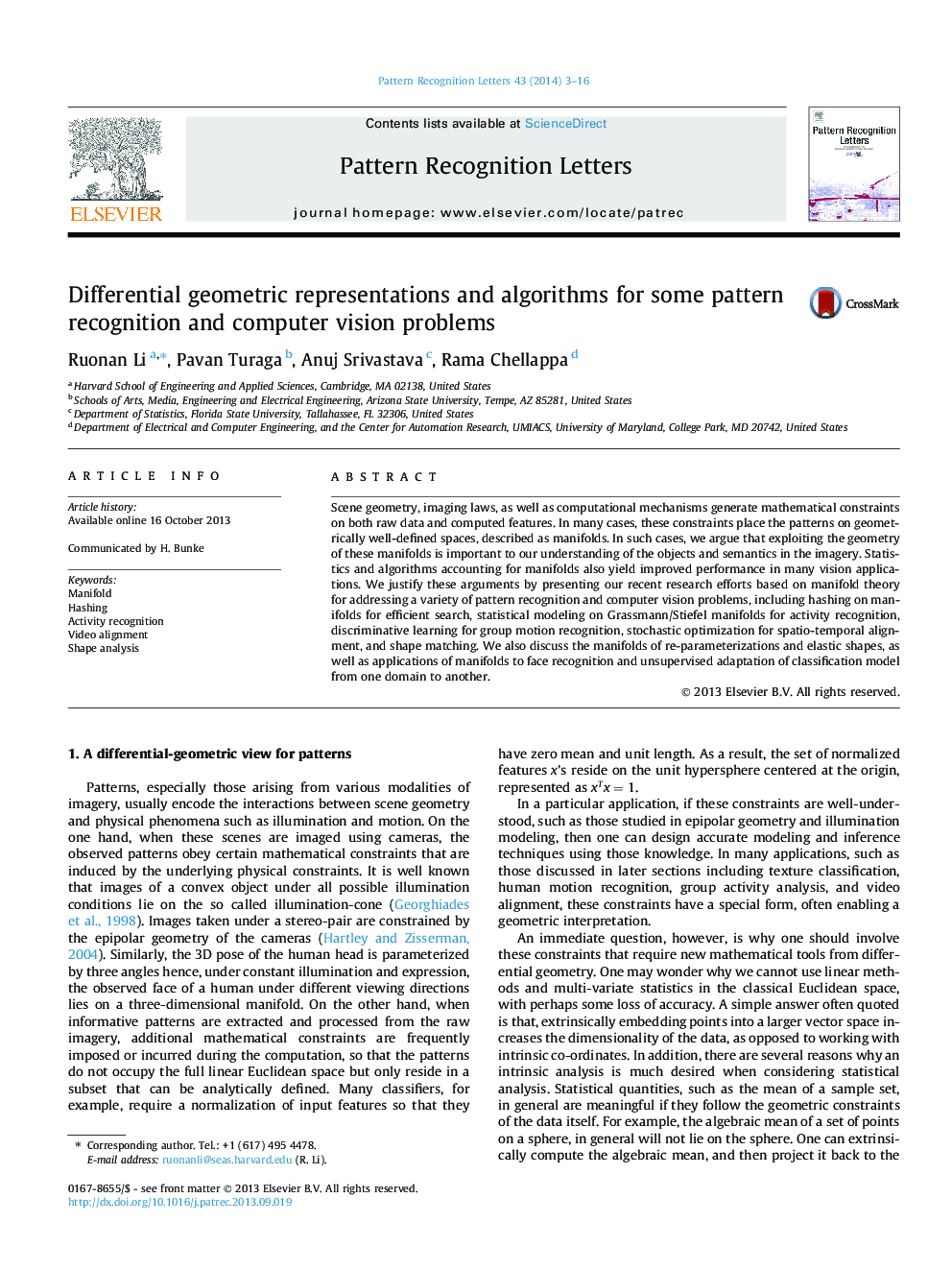| Article ID | Journal | Published Year | Pages | File Type |
|---|---|---|---|---|
| 533869 | Pattern Recognition Letters | 2014 | 14 Pages |
•Applications of manifolds to pattern recognition and computer vision.•Texture classification, activity recognition, video alignment, and shape analysis.•Facial analysis and domain adaptation.
Scene geometry, imaging laws, as well as computational mechanisms generate mathematical constraints on both raw data and computed features. In many cases, these constraints place the patterns on geometrically well-defined spaces, described as manifolds. In such cases, we argue that exploiting the geometry of these manifolds is important to our understanding of the objects and semantics in the imagery. Statistics and algorithms accounting for manifolds also yield improved performance in many vision applications. We justify these arguments by presenting our recent research efforts based on manifold theory for addressing a variety of pattern recognition and computer vision problems, including hashing on manifolds for efficient search, statistical modeling on Grassmann/Stiefel manifolds for activity recognition, discriminative learning for group motion recognition, stochastic optimization for spatio-temporal alignment, and shape matching. We also discuss the manifolds of re-parameterizations and elastic shapes, as well as applications of manifolds to face recognition and unsupervised adaptation of classification model from one domain to another.
